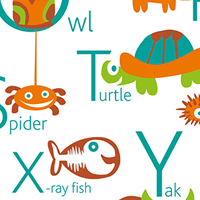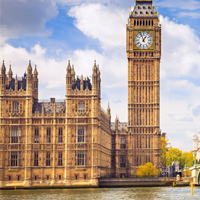Đề thi thử THPT Quốc gia 2018 môn tiếng Anh trường THPT Chuyên Lam Sơn, Thanh Hóa có đáp án (lần 1)
Đề thi thử THPT Quốc gia 2018 môn tiếng Anh
Đề thi thử THPT Quốc gia 2018 môn tiếng Anh trường THPT Chuyên Lam Sơn, Thanh Hóa có đáp án (lần 1) do VnDoc.com sưu tầm và đăng tải dưới đây với cấu trúc ra đề chuẩn hàng năm của Bộ giáo dục rất hữu ích cho các bạn tập dượt, chuẩn bị tốt nhất cho kì thi THPT Quốc gia sắp tới. Mời các bạn cùng thử sức.
Đề thi thử THPT Quốc gia năm 2018 môn tiếng Anh trường THPT Vĩnh Lộc, Thanh Hóa có đáp án
Đề thi thử THPT Quốc gia năm 2018 môn Tiếng Anh trường THPT Chuyên Bắc Ninh (lần 1) có đáp án
Đề thi thử THPT Quốc gia môn tiếng Anh năm học 2017-2018 có đáp án chi tiết
SỞ GD&ĐT TỈNH THANH HÓA TRƯỜNG THPT CHUYÊN LAM SƠN | ĐỀ THI THỬ THPT QUỐC GIA LẦN 1 - 2018 Môn: TIẾNG ANH Thời gian làm bài: 60 phút, không kể thời gian phát đề |
Mã đề thi 234
Họ, tên thí sinh:.....................................................................
Số báo danh: .........................................................................
Mark the letter A, B, C or D on your answer sheet to indicate the word(s) CLOSEST in meaning to the underlined word(s) in each of the following questions.
Question 1: Everyone is hoping and praying that lasting peace will eventually come to the area.
A. Durable B. Ongoing C. Temporary D. Enduring
Question 2: Before you begin the exam paper, always read the instructions carefully.
A. Orders B. Answers C. Rules D. Directions
Mark the letter A, B, C or D on your answer sheet to indicate the correct answer to each of the following questions.
Question 3: Last year, ABBA made a____________ of several million crowns.
A. Win B.Gain C. Salary D. Profit
Question 4: If you like skiing, there’s a ski_______ under an hour’s driving from Madrid.
A. Resort B. Station C. Place D. Port
Question 5: He’s very__________about his private life. He’s got no secrets.
A. Trusworthy B. Direct C. Open D. Sincere
Question 6: Even though they don’t agree with what’s happening, they’re too__________ to protest.
A. Apathetic B. Subdued C. Quiet D. Outgoing
Question 7: Though I didn’t want my son to leave home since he was twenty-one, there was nothing I could do to_______ it.
A. Hinder B. Resist C. Prevent D. Cease
Question 8: She noticed__________ away from the house.
A. Himto run B. Him runinng C. His running D. Him ran
Question 9: George has__________; he loves cakes, chocolate, ice-cream – anything which is sweet.
A. Asweet mouth B. Sweet lips C. A sweet tooth D. A sweet tongue
Question 10: She’s so_________; you relly have to watch what you say or she’ll walk out of the room.
A. High anddry B. Prim and proper C. Rough and ready D. Sick and tired
Question 11: You’ve all___________ the point. The film itself is not racist – it simply tries to make us question our own often racist attitude.
A. Mistaken B. Misunderstood C. Missed D. Lost
Question 12:__________ one or more units of living substance called protoplasm.
A. Although all living things thatconsits of B. All living things consisting of
C. All living thingsconsist of D. In all living things consisting of
Question 13: The production of tin ore in the United States is relatively insignficant________, less than one hundred tons annually.
A. Amountto B. In the amount C. Amount to it D. To the amount of
Question 14: It all happened so quickly, one minute I was making chips and the next the whole kitchen was________ fire!
A. At B. On C. By D. In
Read the following passage and mark the letter A, B, C or D on yout answer sheet ti indicete the word or phrase that best fits each of the numbered blanks from 15 to 19.
About 50 or so kinds of modern plastic are made from oil, gas, or coal – non-renewable natural resources. We (15) well over three millon tons of the stuff in Japan each year and, sooner or later, mist of it is thrown away. Ahigh proportion of our annual xonsumpition is in the (16) of packaging and this constitutes about seven percent by weight of our domestic (17) . Almost all of it can be recycled, but very little of it, though the plastic recycling industry is growing fast.
The plastics themselves are extremely energy-rich – they have a higher calorific (18) than coal and one method of “recovery” strongly (19) by plastic manfactures if the conversion of waste palstic into a fuel.
Question 15: | A. Consign | B. Import | C. Consume | D. Remove |
Question 16: | A. Form | B. Way | C. Type | D. Kind |
Question 17: | A. Goods | B. Refuse | C. Rubble | D. Requirements |
Question 18: | A. Effect | B. Degree | C. Value | D. Dema |
Question 19: | A. Argued | B. Presented | C. Desired | D. Favored |
Read the following passage and mark the letter A, B, C or D on your answer sheet to indicate the correct answer to each to each of the questions from 20 to 25.
FIRST TIME IN THE AIR
When John Mills was going to fly in an aeroplane for the first time, he was frightened. He did not like the idea of being thousands of feet up in the air. “I also didn’t like the fact that I wouldn’t be in control,” says John. “I’m a terrible passenger in the car. When somebody alse is driving, I tell them what to do. It drives everybody crazy.”
However, John couldn’t avoid flying any longer. It was the only way he could visit his grandchildren in Canada. “I had made up my mind that I was going to do it, I couldn’t let my son, his wife, and their three children travel all the way here to visit me. It would be so expensive for them and I know Tom’s business isn’t doing so well at the moment – it would also be tiring for the children – it’s a nine-hours flight!” he says.
To get ready for the flying, John did lots of reading about aeroplanes. When he booked hos seat, he was told that he would be flying on a Boeing 747, which is better known as a jumbo jet, “I need to know as much as possible before getting on that plane. I suppose it was a way of making myself fell better. The Boeing 747 is the largest passenger aircraft in the world at the moment. The first one flew on February 9th 1969 in the USA. It can carry up to 524 passengers and 3,400 pieces of luggage. The fuel for the aeroplanes is kept in the wings and the 747’s wings are so big that they can carry enough fuel for an average car to be able to travel 16,000 kilometers a year for 70 years. Isn’t that unbelievable? Although I had discovered all this very interesting information about the jumbo, when I saw it for the first time, just before I was going to travel to Canada, I still couldn’t believe that something so enormous was going to get up in the air and fly. I was even more impressed when I saw how big it was inside hundred of people!”
The bigger surprise of all for John was flight itself. “the take-off itself was much smoother, than I wxpected although I was still quite scare until we were in the air. In the end, I managed to relax, enjoy the food and watch one of the movies and the view from the window was spetacular. I even managed to sleep for a while! Of course,” continues John, “the best reward of all was when I arrived in Canada and saw my son and his family, particularly my beautiful grandchildren. Suddenly, I felt so silly about the years when I couldn’t even think of getting on a plane. I had let my fear of flying stop me from seeing the people I love most in he world. I can visit my son and his afmily ad often as I like now!”
Question 20: Why did John Mills fly in an aeroplane?
A. He wated to goon holiday. B. He wanted to try it.
C. He wanted to seehis family. D. He had to travel on business.
Question 21: Why did John read about aeroplane?
A. He wanted to know howthey work. B. It was his hobby.
C. It guaranteedhis safety. D. He had found a book on them.
Question 22: What happened when he saw the jumbo jet for the first time?
A. He feltmuch safer. B. He liked the shape of it.
C. He was surprised at howit was. D. He thought the wings were very small.
Question 23: How did John feel when the aeroplane was taking off?
A. Excited B. Happy C. Sad D. Frightened
Question 24: What surprised John most about the flight?
A. That he likedthe food B. That he was able to sleep
C. That there was a moviebeing shown D. That the view was good
Question 25: How did John feel about his fears in the end?
A. He thought he had wasted time being
B. He realised it was okay to be
C. He hoped his grandchildren weren’t afraid of
D. He realised that being afraid kept him
Read the following passage and mark the letter A, B, C or D on your answer sheet to indicate the correct answer to each of the questions from 26 to 34.
Although noise, commonly defined as unwanted sound, is a widely recognized form of pollution, it is very difficult to measure because the discomfort experienced by different individuals is highly exposure to higher leverls may actually cause hearing loss. Particularly in congested urban areas, the noise produced as a byproduct of our advancing technology causes physical and psychological harm but it also detracts from the quality of life for those exposed to it.
Unlike the eyes, which can be corved by the eyelids against strong light, the car has no lid, and is, therefore, always open and vulnerable, noise penetrates without protection.
Noise causes effects that the hearer cannot control and to which the body never becomes accustomed.
Loud noises instinctively signal danger to any organism with a hearing mechanism, including human beings. In reponse, heartbeat and respiration accelerate, blood vessels constrict, the skin pales, and muscles tense. In fact, there is a general increase in functioningbrought about by the flow of adrenaline released in response to fear, and some of these responses perist even longer than the noise, occasionally as long as thirty minutes after the sound has ceased.
Because noise is unavoidable in a complex, industrial society, we are constantly responding in the same ways that we would respond to danger. Recently, researchers have concluded that noise and our response may be much more than an annoyance. It may be a serious threat to physical and psychological health and well-being, causing damage not only to the ear ad brain but also to the heart and stomach. We have long known that hearing loss is America’s number one nonfatal health problem, but now we are learning that some of us with heart disease and ulcers may be victims of noise. Investigations on human subjects have demonstrated that babies are affected by noise even before they are born. Fetuses exposed to noise tend to be overactive, they cry easily, and they are more sensitive to gastrointestinal problems after birth. In addition, the psychological effect of noise is very important. Nervousness, irritability, tension, and anxiety increase, affecting the quality of rest during sleep, and the efficiency of activities during walking hours, as well as the way that we interact with one another.
Question 26: Which of the following is the author’s main point?
A. Hearing loss is America’s number one nonfatal health
B. Loud noise signal
C. Noise may pose a serioud threat to our physical and psychological
D. The car is not like the
Question 27: According to the passage, what is noise?
A. A byproductof technology B. Physical and psychological harm.
C. Congestion. D. Unwantedsound.
Question 28: Why is noise difficult to measure?
A. All people do not respond to it in the samw
B. It causes hearing loss
C. It isunwanted
D. People become accustomed to it
Question 29: The word congested in paragraph 1 could be best replaced by___________ .
A. Hazardous B. crowded C. polluted D. rushed
Question 30: The word it in paragraph 1 refres to___________ .
A. the qualityof life B. our advancing technology
C. thenoise D. physical and psychological harm
Question 31: According to the passsage, people respond to loud noises in the same way that they respond to_________ .
A. annoyance B. danger C. damage D. disease
Question 32: Look at the verb accelerate in paragraph 3. Which of the folowing is the closest in meaning to it?
A. cease B. rise C. swell D. increase
Question 33: The phrase as well as in paragraph 4 is the closest in meaning to which of the following?
A. after all B. instead C. also D. regardless
Question 34: It can be inferred from this passage that the eye________________ .
A. respondsto fear B. enjoys greater protection than the ear
C. increasesfunctions D. is damaged by noise
Mark the letter A, B, C, or D on your answer sheet to indicate the sentence that is closest in meaning to each of the following questions.
Question 35: Wouldn’t it better to let them know about the alterations to the plan?
A. Why haven’t they been informed about the newdevelopment?
B. Shouldn’t they have been counsulted before the scheme waschanged?
C. Don’t you think they should be informed about the changes in theplan?
D. We’d better ask them to change the plan, hadn’twe?
Question 36: Don’t take any notice of all his ocmplaints about his health; there’s nothing wrong with him.
A. You can ignore all his talk of being ill; he’s actually perfectly
B. Try to avoid the subject of his health as I am tired of hearing all about his
C. Don’t listen to him talking about his health; it’s his favorite
D. If you let him, he would talk only about his ill-health though actually he is quite
Question 37: We had planned to walk right round the lake, but the heavy rain made this impossible.
A. In spite of the heavy rain we managed to walk half way round the lake as
B. The heavy rain nearly prevented us from walking right round the
C. We would have walked right round the lake even if it had rained
D. If it hadn’t rained so heavily, we would have walked right round the
Mark the letter A, B, C, or D on your answer sheet to indicate the underlined part that needs correction in each of the following questions.
Question 38: The doctor’s records must be kept (A) thorough and (B) neatly (C) so as to insure (D) good book-keeping.
Question 39: Rabbits and heres (A) look much (B) like and are often (C) mistaken for (D) each other.
Question 40: In the United States (A) among 60 percent (B) of the space on the pages of newspapers (C) is reserved for (D) advertising.
Mark the letter A, B, C, or D on your answer sheet to indicate the sentence that best combines each pair of sentences in the following question.
Question 41: The traffic is so heavy. It will take us at least an hour to get there.
A. Unless the traffic is heavy, it will take us at least an hour to get
B. As the traffic is so heavy, it will take us at least an hour to get
C. The traffic was so heavy that it took us an hour to get
D. We will spend more than an hour to get there to avoid heavy
Question 42: There were no poor performances. Moreover, that of the Russian dancers was certainly the best.
A. The best performance was the one of the one ò the Rusians while some ò the others were
B. The Russian dancers were well-worth watching but the othersweren’t
C. All the dancers but the Russian performed
D. They all danced well, but the Russian did the
Mark the letter A, B, C, or D on your answer sheet to indicate the word that differs from the other three in the position of primary stress in each of the following questions.
Question 43: A. rhetoric | B. dynamic | C. climatic | D. phonetic |
Question 44: A. medieval | B. malarial | C. mediocre | D. magnificent |
Mark the letter A, B, C, or D on your answer sheet to indicate the word whose underlined part differs from the other three in pronunciation In each of the following questions.
Question 45: A. moment | B. mounument | C. slogan. | D. quotient |
Question 46: A. bother | B. worthy | C. weather | D. wealthy |
Mark the letter A, B, C, or D on your answer sheet to indicate the most suitable answer to complete each of the following exchanges.
Question 47: Anne: “Fancy abite to eat?”
Barbara: “________________”
A. No thanks, I’ve justhad some. B. No thanks, I’ve just had something.
C. No thanks, I’t not reallyvery thirsty. D. No thanks, I’m trying to give up.
Question 48: Receptionist: “Good morning.”
Chirs: “Good morning. I’ve come to_______ Mrs. Dabria.”
A. see B. visit C. do business with D. hold a talk with
Mark the letter A, B, C, or D on your answer sheet to indicate the word(s) OPPOSITE in meaning to the underlined word(s) in each of the following questions.
Question 49: He is over the moon about his examination result.
A. stressed B. verysad C. very happy D. satisfied
Question 50: The only means of access to the station is through a dark subway.
A. arrival B. admission C. outlet D. output
----------- HẾT ----------
SGDĐ THANH HÓA TRƯỜNG THPT CHUYÊN LAM SƠN ĐỀ THI CHÍNH THỨC (Đề thi có 06 trang) | KHẢO SÁT CHẤT LƯỢNG THI THPT QUỐC GIA LẦN THỨ I NĂM HỌC: 2017 – 2018 Môn thi: Tiếng Anh Thời gian làm bài: 60 phút, không kể thời gian phát đề |
Đáp án Đề thi Đại học môn tiếng Anh năm 2018
1 | D | 11 | C | 21 | A | 31 | B | 41 | B |
2 | D | 12 | C | 22 | C | 32 | D | 42 | D |
3 | D | 13 | D | 23 | D | 33 | C | 43 | A |
4 | A | 14 | B | 24 | B | 34 | B | 44 | C |
5 | C | 15 | B | 25 | A | 35 | C | 45 | B |
6 | A | 16 | A | 26 | C | 36 | A | 46 | D |
7 | C | 17 | B | 27 | D | 37 | D | 47 | B |
8 | B | 18 | C | 28 | A | 38 | B | 48 | B |
9 | C | 19 | D | 29 | B | 39 | B | 49 | B |
10 | B | 20 | C | 30 | C | 40 | A | 50 | C |
-----------------
Kì thi THPT Quốc gia là kì thi quan trọng nhất, đánh dấu bước ngoặt lớn đối với kì học sinh nào. Để có một kì thi THPT Quốc gia diễn ra thành công thì luyện đề là một trong những hoạt động cần thiết. Tuy nhiên, vì là một kì thi tổng hợp và xuyên suốt tất cả các kiến thức các bạn được học trong 12 năm nên việc chia nhỏ và ôn luyện nhuần nhuyễn từng mảng sẽ mang lại hiệu quả tốt nhất. Sau đây mời các bạn cùng tham khảo.
75 cấu trúc Tiếng Anh cơ bản thường gặp ở Đề thi THPT Quốc gia
Bài tập về câu điều kiện trong tiếng Anh có đáp án
173 câu Word Form ôn thi THPT Quốc gia 2017 môn Tiếng Anh CÓ ĐÁP ÁN
400 câu trắc nghiệm cho ôn thi THPT Quốc gia môn tiếng Anh
350 câu bài tập trọng âm ôn thi THPT Quốc gia 2016 môn Tiếng Anh










